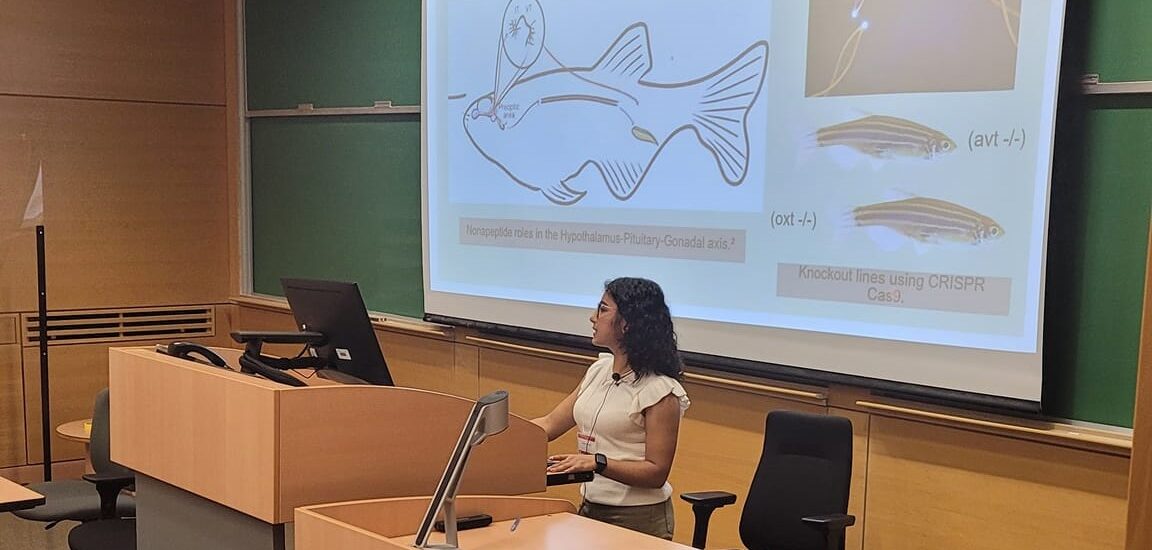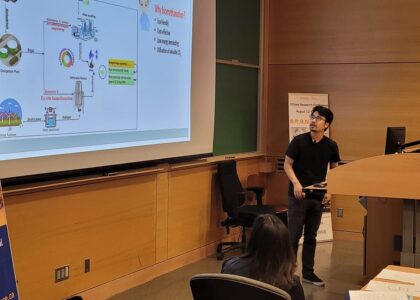Kusum Sharma.
Nonapeptides oxytocin (oxt) and arginine vasotocin (avt) are evolutionarily conserved in vertebrates and have arisen through an ancestral vasotocin gene duplication. Taking advantage of recently generated homozygous zebrafish knock-out lines (KO) for oxytocin (oxt -/-) and arginine vasotocin (avt -/-), the author tested preliminary findings that avt -/-, but not oxt -/-, KO affects reproductive success in a female-specific manner. There is a significant reduction in the average number of eggs spawned in the avt -/- line 2, but not oxt -/- line 2, compared to the wildtype (wt). Furthermore, mating trials with WT backcrosses make it evident that this is a female-specific effect, because male avt -/- crossed with female WT exhibited normal spawning success, while female avt -/-crossed with male WT produced a reduced number of eggs like the double KO mating results. This affect does not appear to be mediated by AVT-dependent changes in reproductive behaviour, as indices of courtship behaviour in line 2 avt -/- females are not different from wt. Histological data shows that the effect is furthermore linked to female egg maturation than release, as avt -/- lines have a premature arrest in the egg maturation stages 2-3. This is further corroborated at the gene expression level as nanos2, a primordial germ cell marker, does not exhibit different ovarian transcript expression between WT and avt -/-, suggesting a similar reservoir of germ cells. Conversely the expression of the luteinizing hormone receptor lhr revealed a significantly reduced expression in ovaries of avt -/- females, suggesting that decreased peripheral responsiveness to LH may contribute to the female reproductive phenotype in this KO line. Together, these data support a role for vasotocin in the female male zebrafish reproductive physiology and success, which has implications for aquaculture and ecotoxicological research.
Download entire Presentation from here.
Keywords: Nonapeptides, Zebrafish, Double KO, Vasotocin, Oxytocin
Author: Kusum Sharma
Department of Biology, University of Ottawa, Ottawa, Canada






